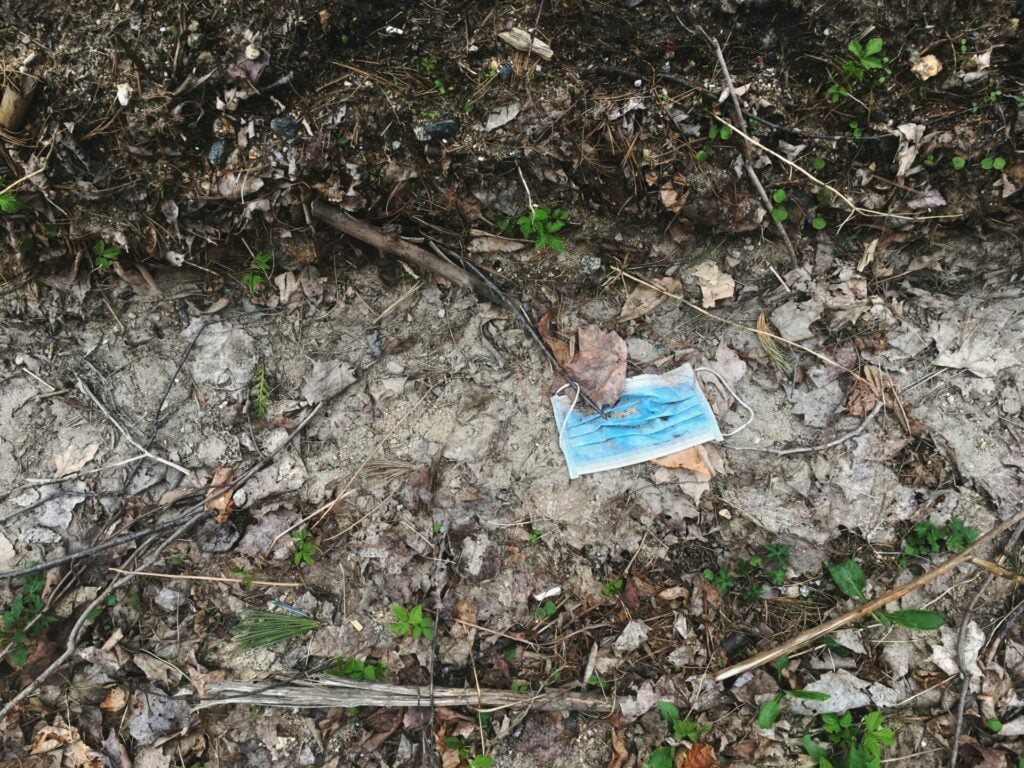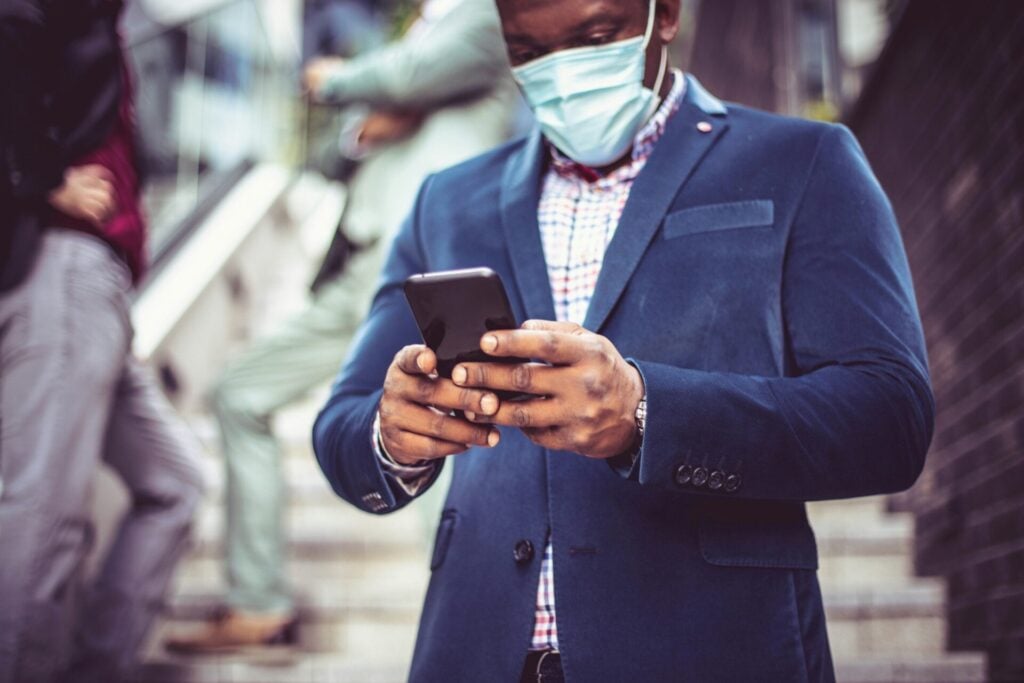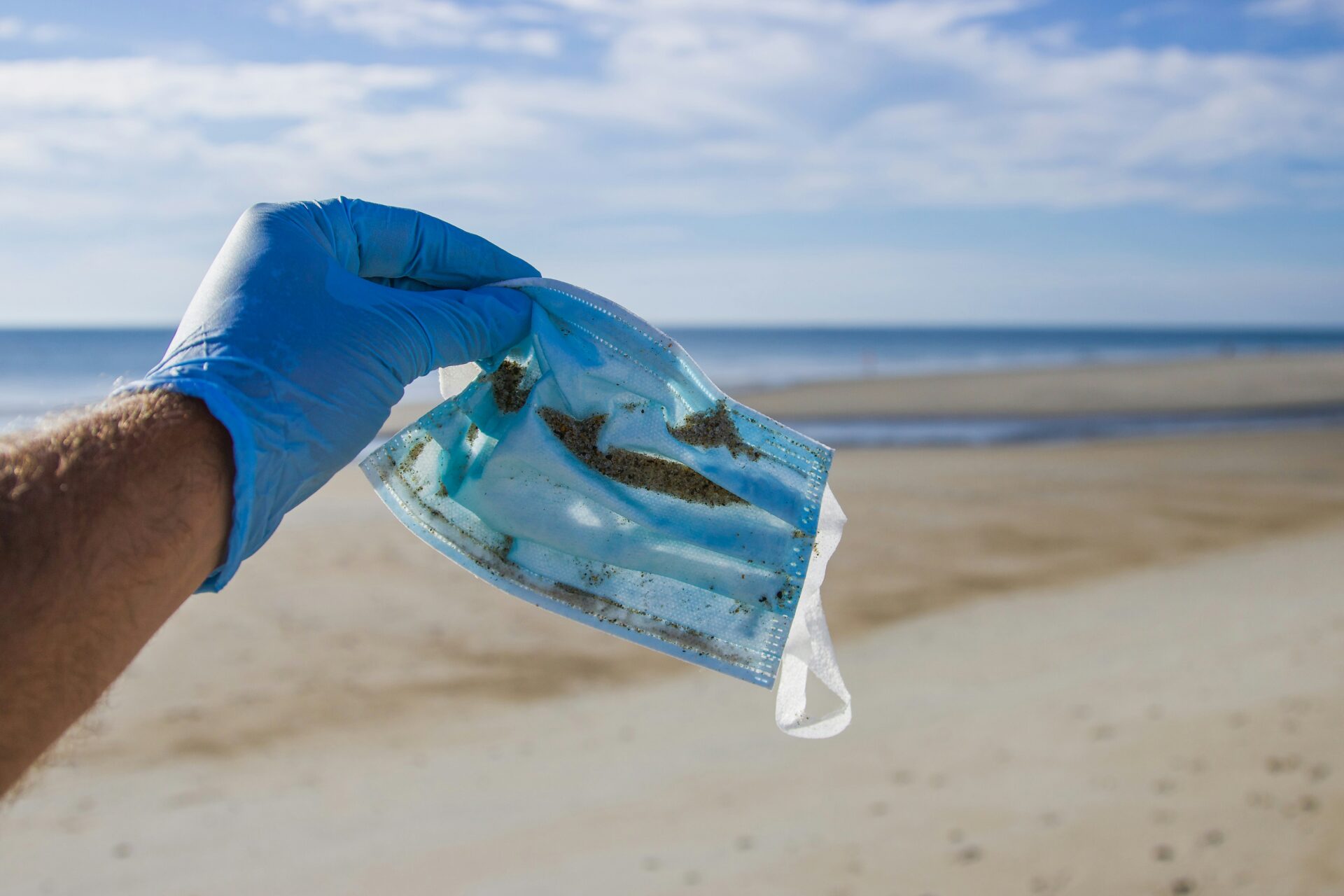Disposable masks worn during the Covid 19 pandemic could harm humans, animals and the environment as they break down releasing poisonous toxins.
According to research, billions of tonnes of the plastic face coverings which were dumped at locations across the world, are now emitting microplastics and chemical additives.
It has been estimated that during the height of the coronavirus pandemic 129 billion disposable masks, mostly made from polypropylene and other plastics, were being used every month.
With no recycling procedures, most ended up either in landfill or littered in streets, parks, beaches, waterways and rural areas. Now years after the Covid pandemic, they have started to degrade.

As billions of discarded face masks break down, they release not only microplastics but also chemical additives like bisphenol B and nylon fibres. Once shed, these fragments don’t stay contained, they drift into rivers, seas and soils, where they mingle with the plastic already polluting our planet.
‘This study has underlined the urgent need to rethink how we produce, use and dispose of face masks,’ said Anna Bogush of the UK’s Coventry University Centre for Agroecology, Water and Resilience, the lead author of the study.
It has been estimated that during the height of the coronavirus pandemic 129 billion disposable masks, mostly made from polypropylene and other plastics, were being used every month.
Bogush and her co-author, Ivan Kourtchev, set out to determine how many microplastic particles were released from face masks simply sitting in water, without moving at all.
They left newly bought masks of several different kinds for 24 hours in flasks containing 150ml of purified water, then filtered the liquid through a membrane to see what came out. Every mask examined leached microplastics, but it was the FFP2 and FFP3 masks – marketed as the top protection against transmission of the virus – that emitted the most, releasing four to six times as many.

Subsequent chemical analysis found medical masks also released bisphenol B, an endocrine-disrupting chemical that acts like oestrogen when absorbed into the bodies of humans and animals.
Other plastics such as polyethylene, polyester, nylon and PVC were also detected, especially in the filtering facepieces used widely during covid.
Bogush said: ‘We can’t ignore the environmental cost of single-use masks, especially when we know that the microplastics and chemicals they release can negatively affect both people and ecosystems.
Microplastics ripple through the entire food web, accumulating in plankton and shellfish before passing up the chain to larger predators, and ultimately to us. Scientists estimate that the average person ingests around 5 grams of microplastics every week, about the weight of a credit card.
These invisible fragments have been detected in drinking water, seafood, fruits, vegetables, and even the air we breathe. Once inside the body, they have been found lodged in lungs, livers, spleens and kidneys.
Alarmingly, a recent study even discovered microplastics in our brains and the placentas of newborn babies. The full extent of their impact on human health is still unknown, but the evidence is mounting that plastic pollution is not just an environmental crisis, it is a human health crisis too.
As Bogush adds: ‘As we move forward, it’s vital that we raise awareness of these risks, support the development of more sustainable alternatives and make informed choices to protect our health and the environment.’









